Birds Well Adapted to Urban Life, but Not Always Welcome
Jun 17, 2021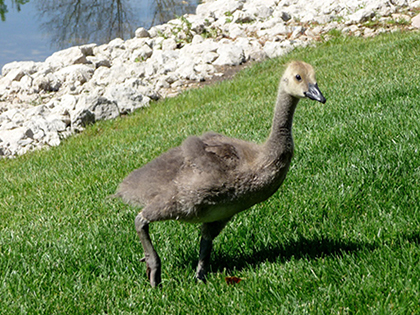
Did you know that dinosaurs never went extinct? That’s right, we still have dinosaurs today! The first bird, archaeopteryx, evolved over 150 million years ago from dinosaurs closely related to the infamous velociraptor. Raptors looked very different than they do in the movies. They were much smaller, fully feathered and looked a lot more like birds than reptiles.
Birds are incredibly adaptive. They are the only known descendants of dinosaurs to have survived. They have colonized all continents, traverse the ocean, and thrive in the most extreme of environments. It’s no wonder that some bird species have adapted so well to the urban environments that humans have created.
Human structures create a wide variety of nesting opportunities for many bird species. Cavity and ledge nesters like pigeons, mourning doves, house finches, robins, starlings, and house sparrows find all sorts of nooks and crannies to raise families in. Swallows find our overhangs, loading docks, and bridges irresistible nesting areas. Colony nesters such as ring-billed and herring gulls, and even Canada geese, see our flat commercial and industrial roofs as great spots to nest safely away from ground predators. Green roofs are excellent habitat for many birds and one roof in New York City was found to have 11 different species of birds utilizing the space. Turkey vultures, though they don’t usually nest on buildings, use them to rest and scan for roadkill to feast on. Killdeer build well-camouflaged nests on gravel pathways. Even the peregrine falcon, the fastest animal on the planet, has made city buildings part of its nesting habitat. Sometimes these nests are welcome and building inhabitants enjoy watching the birds raise their offspring. Often, however, nesting birds are a source of health and safety concerns for building residents.
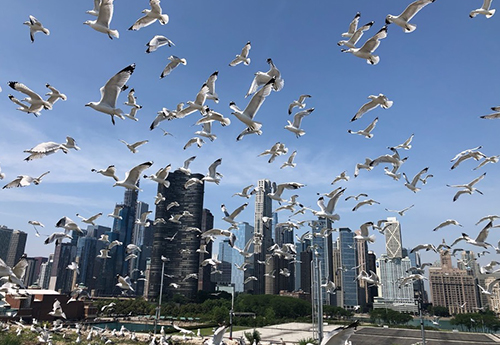
These gulls and terns have colonized this green roof at Chicago’s Navy Pier.
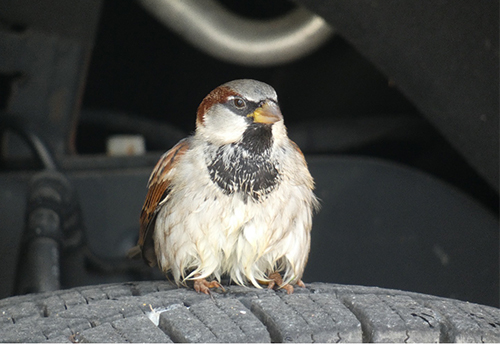
After bathing in a nearby parking lot puddle, this house sparrow makes himself comfortable on the tire of this truck.
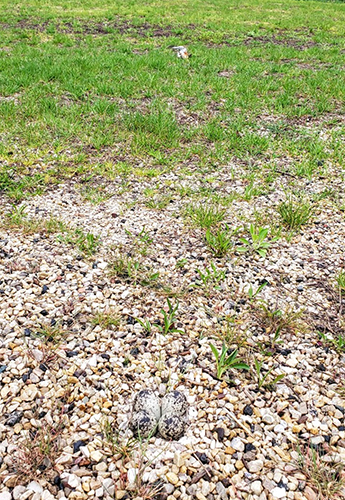
A well camouflaged killdeer nest on a gravel cart path. The adult in the background is feigning injury to draw the potential threat away from her eggs.
Water Retention Areas: If you Build Them, Birds Will Come
With buildings and parking lots comes retention areas to collect rainwater and prevent flooding. These ponds and ditches create habitat for many waterbirds and a few species have thrived in these man-made urban environments. Canada geese, which were nearly extinct by the 1960s, have rebounded so profusely they are now considered a nuisance almost everywhere they are found. Mallard ducks, while not a nuisance, can be seen colonizing almost every puddle, pond, and drainage area. Red-winged blackbirds find the cattails, invasive phragmites grass, and other shoreline vegetation to their liking and have become one of the most common urban and suburban birds. Even wild turkeys, once a rare sight, now strut their stuff on urban streets, in back yards, and even in mall parking lots.
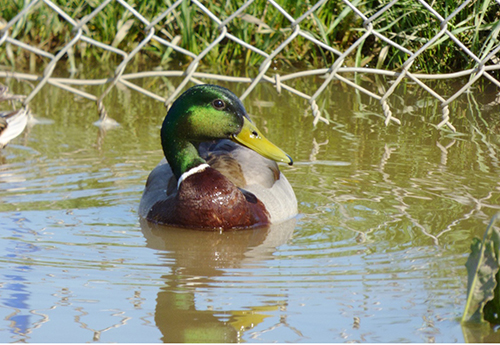
Even the smallest urban puddle is welcome to mallard ducks
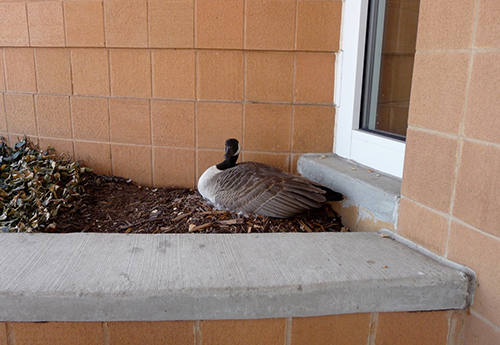
Canada Geese have made themselves very comfortable in our urban areas!
Humans have created new food sources for birds too. Bird feeders are popular, even in the city and innovations have allowed even people on upper floors to put bird feeders on their windows. Our food also becomes their food, with litter and food waste a key component in many urban bird diets, especially gulls, starlings, and pigeons. Hand-feeding birds like ducks, geese, and pigeons is also a common pastime for many people, though this is often harmful to birds and the environment and should be discouraged.
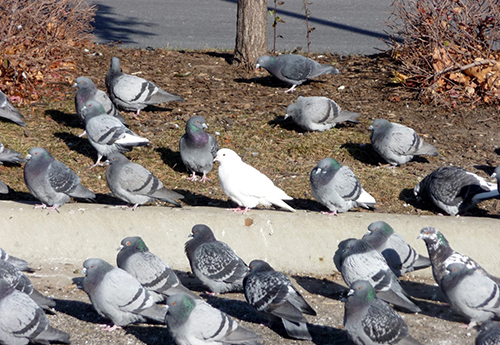
Hand-feeding draws in pigeons, geese, ducks, and other birds. It is usually not good for the birds or the environment.
While many migratory bird species are suffering and in decline due to human actions, other birds are thriving and adapting to the new world we are creating around them.
If you are experiencing nuisance issues with these intelligent and adaptive animals, Wild Goose Chase can help. With experts on staff and decades of experience managing nuisance bird species, we can help you solve your bird conflicts with the humane and conscientious treatment these modern dinosaurs deserve. Contact us today to learn how we can help.




 0
0
